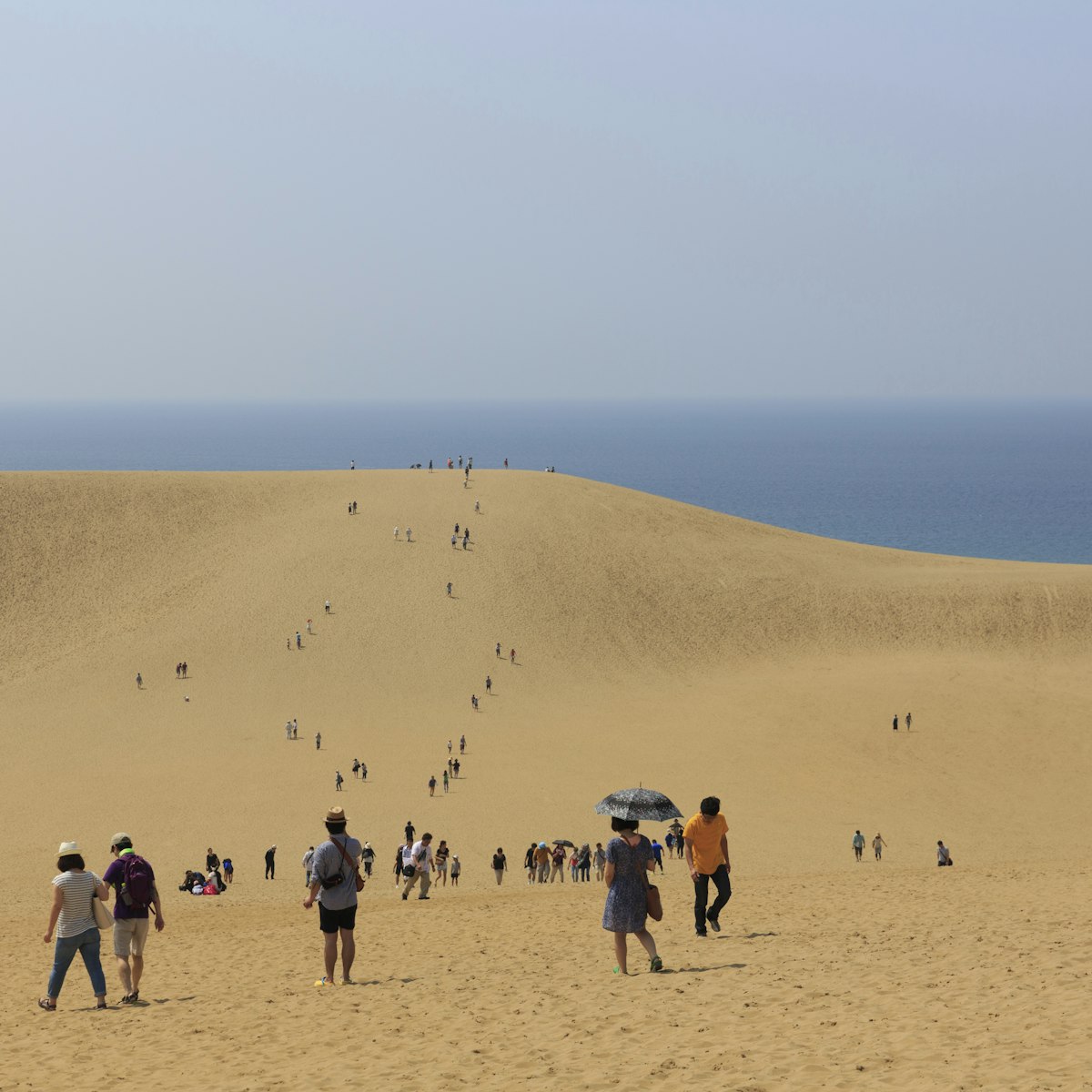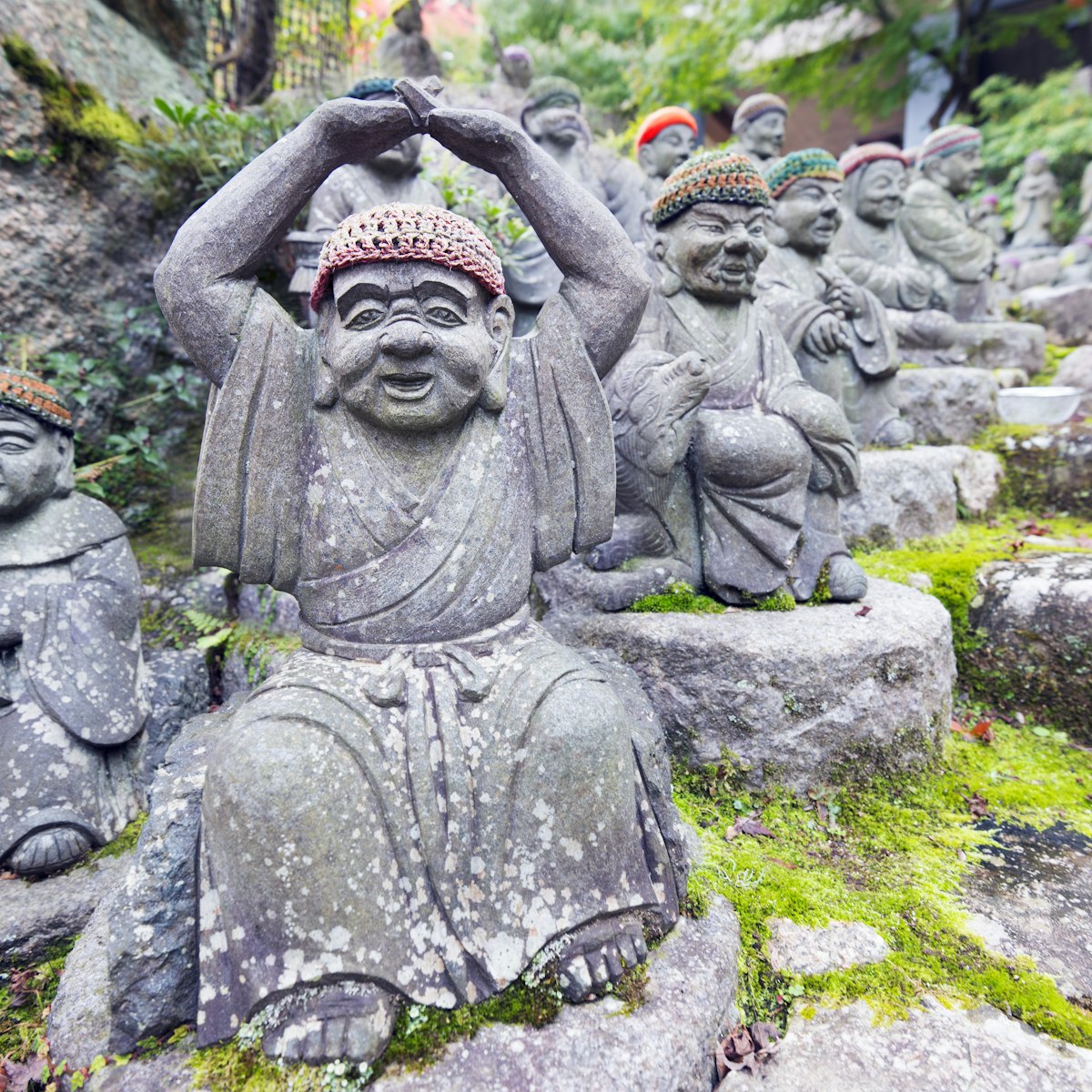
Hiroshima
Hugged by rivers on both sides, Peace Memorial Park is a large, leafy space crisscrossed by walkways and dotted with memorials and tranquil spaces for…

Hiroshima
Hugged by rivers on both sides, Peace Memorial Park is a large, leafy space crisscrossed by walkways and dotted with memorials and tranquil spaces for…

Western Honshū
Izumo Taisha, also known as Izumo Ōyashiro, is perhaps the oldest Shintō shrine in Japan. This shrine, dedicated to Ōkuninushi, god of marriage and…

Western Honshū
Kōraku-en draws the crowds with its reputation as one of the three most beautiful gardens in Japan. It has expansive lawns broken up by ponds, teahouses…

Miyajima
With origins as far back as the late 6th century, Itsukushima-jinja gives Miyajima its real name. The shrine's unique and attractive pier-like…

Western Honshū
Used as the location for Teshigahara Hiroshi's classic 1964 film, Woman in the Dunes, the Tottori sand dunes are on the coast about 5km from the city…

Hiroshima
Perhaps the starkest reminder of the destruction visited upon Hiroshima in WWII is the Atomic Bomb Dome. Built by a Czech architect in 1915, it was the…

Miyajima
Just south of town at the foot of Misen, Daishō-in is a worthwhile stopping point on the way up or down the mountain. This Shingon temple is crowded with…

Miyajima
Covered with primeval forest, the sacred, peaceful Misen is Miyajima's highest mountain (530m), and its ascent is the island's finest walk – especially in…

Western Honshū
Dating from 1611, picturesque Matsue-jō has a wooden interior showcasing treasures belonging to the Matsudaira clan. Known as 'Plover Castle' for the…

Naoshima
In Honmura, half a dozen traditional buildings have been turned over to contemporary artists to use as the setting for creative installations, often…

Western Honshū
Local businessman and art collector Adachi Zenkō founded this excellent museum, located east of Matsue in Yasugi. The collection includes over 100…

Western Honshū
This is Kurashiki's premier museum, housing the predominantly Western art collection amassed by local textile magnate Ōhara Magosaburō (1880–1943), with…

Western Honshū
This kiln and gallery-shop is run by the Kimura family, one of the six original families granted official permission in the early 1600s to produce pottery…

Western Honshū
Within the Akiyoshi-dai Quasi-National Park, Akiyoshi-dō is the largest limestone cave in Japan. It extends about 10km (though public access is limited to…

Hiroshima Peace Memorial Museum
Hiroshima
The main building of Hiroshima's premier museum houses a collection of items salvaged from the aftermath of the atomic bomb. The displays are confronting…

Western Honshū
A highlight of a trip to Shimonoseki is an early-morning visit to the Karato fish market. It's a great opportunity to try sashimi for breakfast or lunch,…

Western Honshū
Within walking distance of town, this thriving shrine, built in 1773 by the seventh lord Kamei Norisada, is one of the five major Inari shrines in Japan…

Western Honshū
Teshima's art 'museum' impresses for its architecture – a monumental concrete shell, forming a low teardrop-shaped dome on the hillside, designed by Tokyo…

Western Honshū
Iwakuni's chief claim to fame is this graceful bridge, built in 1673 during the rule of feudal lord Kikkawa Hiroyoshi. It has been restored several times…

Western Honshū
This Buddhist temple dating from 718 on Daisen, long considered a sacred mountain, seems eternally tranquil. In reality, from the eighth to the 14th…

Marukin Soy Sauce Historical Museum
Western Honshū
Shōdo-shima was famous for its soybeans long before olives arrived, and several old soy-sauce companies are still in business here. Marukin has a small…

Western Honshū
As official merchants to the daimyō, the Kikuya family's wealth and connections allowed them to build a house well above their station (they were…

Western Honshū
North of the town centre is Kōzan Park, where the five-storey pagoda of Rurikō-ji (瑠璃光寺), a National Treasure dating from 1442, is picturesquely situated…

Miyajima
This 16m-tall vermilion torii (shrine gate) is a symbol of Miyajima and the watery entrance to World Heritage shrine Itsukushima-jinja. At high tide, it…

Western Honshū
East of the river, pretty Tōkō-ji, built in 1691, is home to the tombs of five Mōri lords. The stone walkways on the hillside behind the Zen temple are…

Naoshima
This yellow pumpkin sculpture, by Japanese artist Yayoi Kusama, has become a symbol of Naoshima. It's perched on the end of a small jetty. Pumpkins are…

Western Honshū
This handsome building was originally a high-end restaurant named Gion Saikotei from 1878 to 1996. In 2004 it was converted into this cultural museum,…

Western Honshū
You came to see sand? Well, there's truckloads at this impressive museum of sand sculptures, where sand aficionados from all over the world are invited to…

Western Honshū
Built in 1793, this beautifully restored wooden house belonged to one of Kurashiki's richest families. It was built at a time when prosperous merchants…

Hiroshima
Located in an interesting 1970s building, this museum has a decent collection of minor works by well-known painters including Picasso, Gauguin, Monet and…

Western Honshū
About 6km northeast of central Hagi is this 112m dormant volcano. The top has gorgeous views of the Sea of Japan and a tiny 30m-deep crater. There is also…

Hiroshima
Exploring a garbage-processing plant might not sound appealing, but if you're an architecture fan this building is worth a visit. The waterfront building…

Western Honshū
Nicknamed U-jō (烏城; Crow Castle) because of its colour, the striking black Okayama Castle has an imposing exterior with gilded-fish gargoyles flipping…

Western Honshū
Within this park, there's not much of the old Hagi-jō to see, apart from the castle's typically imposing outer walls and the surrounding carp-filled moat…

Western Honshū
The original Iwakuni-jō was built by Hiroie, the first of the Kikkawa lords, between 1603 and 1608. Just seven years later, the Tokugawa shogunate passed…

Hiroshima
The Children's Peace Monument was inspired by Sadako Sasaki, who was just two years old at the time of the atomic bomb. At age 11 she developed leukaemia,…

Western Honshū
What remains of the old samurai quarter in Iwakuni now forms pleasant Kikkō-kōen, accessed via Kintai-kyō bridge. Within the park are old residences, a…

Hiroshima
Also known as Carp Castle (鯉城; Rijō), Hiroshima-jō was originally constructed in 1589, but much of it was dismantled following the Meiji Restoration. What…

Hiroshima National Peace Memorial Hall for the Atomic Bomb Victims
Hiroshima
A softly lit internal walkway leads down into this cool, contemplative space, where the walls show a circular panorama of Hiroshima and the names of its…

St Francis Xavier Memorial Church
Western Honshū
Built in 1952 in honour of St Francis Xavier, this church burned down in 1991 and was rebuilt in 1998 with a clinically modern interior and geometric…